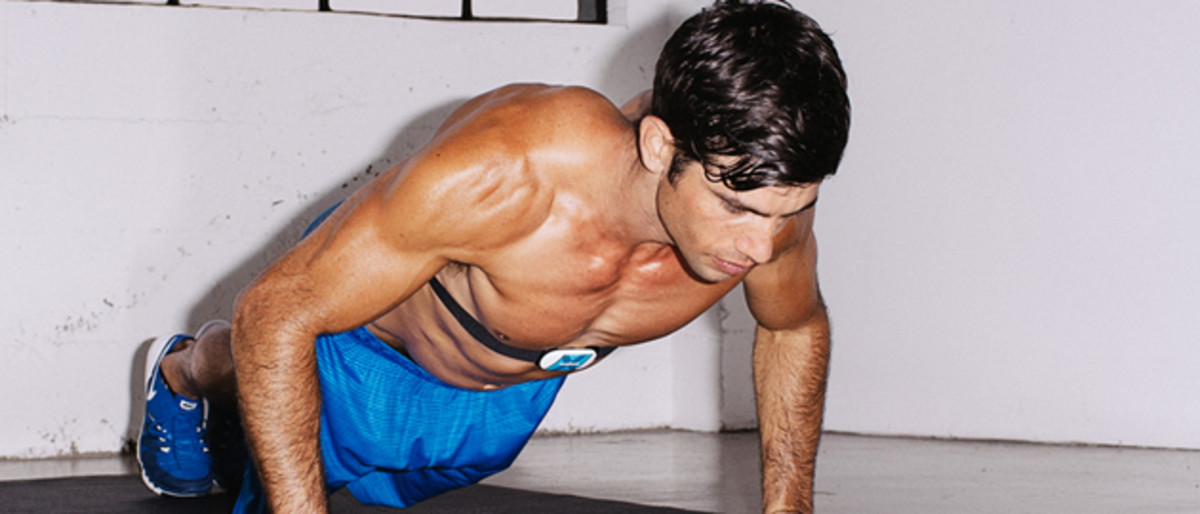Real Salt Lake seeking an edge by utilizing player-tracking technology

For nine years, Dan Barlow, Real Salt Lake’s director of sports and science performance has been searching for a way to ensure his soccer players show up fit and healthy at the start of preseason training. This past offseason he sent them all home with TICKR X, a heart rate and motion sensor that straps around the chest to help keep track of his players when they weren't in the facility. And the experiment seemed to work.
“This year,” Barlow says, “the only players who we had with tears or anything like that were players that we’d drafted, players that we pulled in very late in the offseason.”
Winter 2014 wasn’t the first time Barlow tried using electronics to track his players during the break. In his first couple of years with the team, he gave each of his players a Suunto Memory Belt, a heart rate recorder that also wraps around the chest. He also gave them a couple of pre-addressed and prepaid envelopes. Unfortunately the Suunto device wasn’t quite ready for the mobile world.
Seeing the benefit: MLB teams focus on enhancing players' visual training
“At certain points in time in the off season they’d FedEx it all back to me,” Barlow explains. “I would then have to download the data from the belts onto my computer, and then FedEx the belts back to them.”
That system also wasn’t perfect because the belts were prone to breaking—perhaps from all the long journeys in the mail—but Barlow did find that it worked well at ensuring his athletes kept up with their training requirements. However, when Suunto discontinued the belts a couple of years into Barlow’s tenure at Real Salt Lake, he was left with a hole in his offseason program that he hadn’t worked out how to fill until this past year.
Made by Wahoo Fitness, TICKR X is a relatively simple wearable device. It records heart rate, core body motion, and connects to other devices via Bluetooth. But simplicity was the secret to its success.
During the regular season, Barlow uses a different device for training made by STATSports called the Viper Pod. In addition to the TICKR’s heart rate sensor and three-axis accelerometer, the Viper Pod also has GPS, a gyroscope, and a compass. With this system, Real Salt Lake’s coaches can study exactly how each person on the team moves and works in formation with others. But Barlow only has one docking station to download the data and keep the Pods charged. Buying a docking station for each player would get expensive. And the aim of Barlow’s offseason workout program wasn’t to know exactly where each player was, but to simply be able to check they were doing the workouts and training to the right intensity.

“There’s no physical way to track what they’re doing unless I have something like TICKR,” Barlow explains. “There’s no way for me to ensure that they’re doing what they’re supposed to be doing unless they’re actually recording the workouts that I’m asking them to do.”
That’s not to say that Real Salt Lake’s players aren’t serious about their soccer.
“This is my life, this is my career,” says Devon Sandoval, a forward from New Mexico starting his third year with the team. “It’s a full-time job. I’ve got to take care of my body all year, and stick with the training.” Apart from a one-week trip home to Albuquerque, Sandoval spent most of his break training at his club’s base in Salt Lake City.
But at home, on their own, cutting back or missing an occasional workout would be easier, if Barlow wasn’t keeping electronic tabs on them.
“Training sessions for these guys are typically fun, because they’re all together, and you’re playing soccer,” Barlow says. Hitting the gym all on your lonesome is a harder proposition. And the players could keep tabs on each other, too. They could upload their workouts to a team page on Strava’s fitness social media platform, fueling, at least in Sandoval, a competitive nature to train harder, run faster, and start the season in better condition than anyone else.
